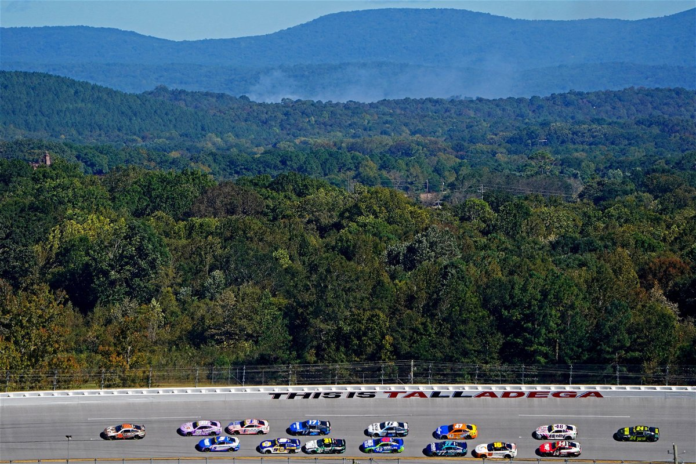Published 11/19/2022, 5:45 AM EST
The NASCAR season concluded on November 6th in Phoenix, with Joey Logano taking home the Cup Series. But if one were to analyze the final 4 going into that race, it showed one big change – the change of guard.
ADVERTISEMENT Article continues below this ad
All 4 drivers in the Championship 4 were fairly young. Chase Elliott was the youngest at 26 years, while Joey Logano was the oldest at 32. These drivers, in the eyes of a neutral viewer, are the future of NASCAR.
ADVERTISEMENT Article continues below this ad
Not just in sporting terms, but also in terms of fan following. Elliott and Logano are among the fan favorites while Ross Chastain made his own claim for fame with the audacious move he pulled off in Martinsville to secure a place on the grid in Phoenix.
And that partly explains the trend that NASCAR has seen over the past few years as well. Just taking 2022 as an example, viewership for Fox and NBC rose by 4% year-on-year.
Furthermore, Brian Herbst, NASCAR’s Senior VP for Media, explained “Fox had their third consecutive year of ad revenue increases in 2022. NBC had their second consecutive year of ad revenue increases in 2022. So it’s working for them — both from a viewership and an ad revenue perspective.”
NASCAR has never been bigger, and it has never been better. These numbers put Herbst and NASCAR in a very strong position going into negotiations for the next cycle of media rights of the sport.
Currently, Fox and NBC pay a combined $820 million, but that deal is expiring in 2024. Heading into the off-season, sources believe NASCAR will try to seek a 10-15% higher price, equating to $900-$950 million per year from the broadcasters.
There are a lot of things going in favor of NASCAR in order to demand that premium, however, the biggest thorn in their side is going to be the current business environment.
Plans by NASCAR have ruffled some feathers among teams and owners
The current business model for teams is sponsorship-money-centric. Sponsorship funds form as much as 60-80% of what teams earn as revenue. But this model is flawed for multiple reasons, and teams want it to change.
Nov 6, 2022; Avondale, Arizona, USA; NASCAR Cup Series driver Ross Chastain (1) leads a group during the Cup Championship race at Phoenix Raceway. Mandatory Credit: Gary A. Vasquez-USA TODAY Sports
If Fox and NBC make an offer to NASCAR’s satisfaction, there’ll be a lot more money flowing into the sport. But even if they don’t, there are others waiting in the flanks to bid. The ball is in NASCAR’s court. They are aware of the demand, given the NFL just generated over $100 billion in their rights deal.
But teams feel that money needs to be distributed so that everyone gets their fair share. Only recently, Joe Gibbs Racing had to let Kyle Busch go when Mars & Wrigley pulled the plug on their sponsorship. Had the pie split between teams, that wouldn’t have happened.
ADVERTISEMENT Article continues below this ad
Curtis Polk, Michael Jordan’s advisor at 23XI Racing, said “There’s a total misalignment of interests. As a result, the economic model is broken for the teams… The sustainability of the teams in this sport is not very long-term unless we have a fundamental change in the model.”
He further added, “It’s a wonderful sport. People are in love with it and it produces a lot of money. Let’s just be fair about it. Let’s be fair and equitable. That’s all we’re asking for.”
Progress on the front hasn’t been positive; Jeff Gordon said after receiving an offer from NASCAR, “We finally did get a response from them — and we’re very far apart.”
ADVERTISEMENT Article continues below this ad
Watch This Story: Billionaire Michael Jordan’s Huge $150M Investment Was Unknowingly Influenced by NASCAR’s Most Successful Driver: Here’s How
Other sports have shown the success that a revenue-sharing model brings. If NASCAR has the ability to rake in the big bucks, it must use it to make the sport more competitive and that can only happen through a model on those lines.


